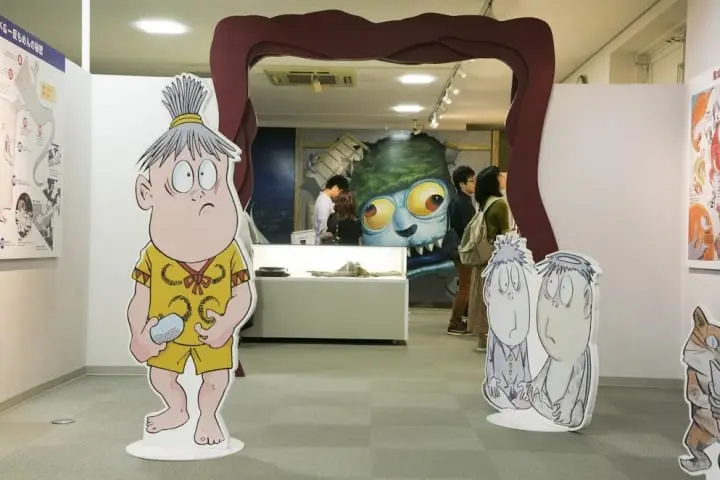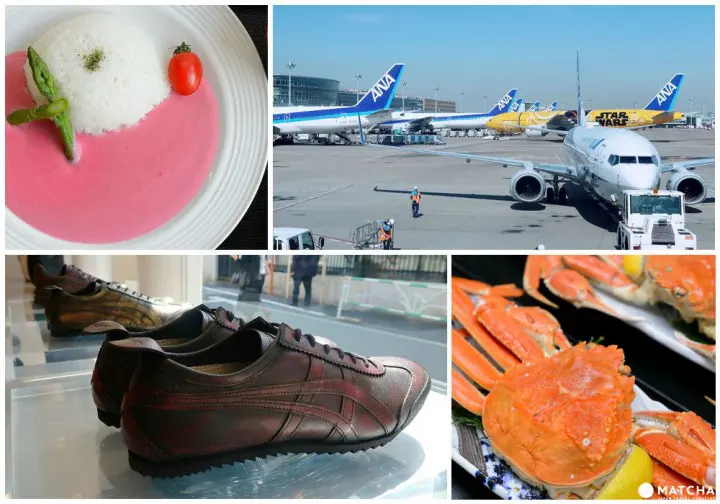Mizuki Shigeru Road In Tottori - The Door To GeGeGe No Kitaro's World!

There are many anime and manga series featuring yokai (monsters) in Japan, but "GeGeGe no Kitaro" by Shigeru Mizuki was what caused the yokai culture trend, and in Sakaiminato, Tottori, you can experience that world on the Mizuki Shigeru Road.
As you might know, there are countless animes and manga comics featuring yokai (monsters) in Japan, such as the much loved movie “Spirited Away”, the “Yokai Watch” series, and more.
And the person we are to thank for making the yokai boom accelerate so quickly and gain traction as a staple of Japanese pop culture, is Shigeru Mizuki (1922-2015), born and raised in Sakaiminato in Tottori prefecture.
The storyline of Shigeru Mizuki’s most famous manga creation, “GeGeGe no Kitaro”, is as follows. The main character, Kitaro, is determined to fight all bad monsters and humans alike, in order to create a world where both can live peacefully.
Ever since 1968, when this manga was first made into an anime, five anime series based on the manga have been produced and shown in the country, and the anime even made its debut in overseas as well.
And here’s the best news of all – you can experience the exciting world of “GeGeGe no Kitaro” in person in the city of Sakaiminato, or, more precisely, at its Mizuki Shigeru Road.
Mizuki Shigeru Road, Where You Can Meet Yokai from “GeGeGe no Kitaro”

Photo courtesy of: Mizuki Production
Mizuki Shigeru Road is a street that spreads over roughly 800 meters from JR Sakaiminato Station, and is known for its numerous bronze statues of yokai monsters that appeared in Mr. Mizuki’s manga “GeGeGe no Kitaro”, as well as for numerous stores selling souvenirs related to the world of yokai.

Photo courtesy of: Mizuki Production

Photo courtesy of: Mizuki Production
It is a world of different yokai characters – both the weird and gloomy ones, and the cute and lovable ones, and there are as many as 170 bronze statues of them placed alongside the road! Other than that, you can visit a nearby theme-park, the GeGeGe no Yokai Rakuen (GeGeGe no Yokai Paradise), or the haunted house Kitaro Yokai Soko (Kitaro Yokai Storehouse).
Sakaiminato Tourist Association Official Website: http://www.sakaiminato.net/foreign/en/
The Profound World of Yokai and Mizuki Shigeru Museum
Admire Many Works by Mr. Mizuki at Mizuki Shigeru Museum

Photo courtesy of: Mizuki Production
One of the most visited tourist attractions on Mizuki Shigeru Road, located about a ten minute walk from JR Sakaiminato Station, is the Mizuki Shigeru Museum. Here you can learn about the life of Mizuki Shigeru from its many exhibitions, as well as about his famous works apart from “GeGeGe no Kitaro”.
Ever since it opened in 2003, it has been immensely popular with tourists from Japan and other countries, with more than 200,000 people visiting each year. The entrance fee for international visitors is 300 yen (half the original price of 700 yen), and there is earphone guidance available in English, Chinese, and Korean.
Mizuki Shigeru Museum Official Website: http://mizuki.sakaiminato.net/?id=7 (Japanese and English)
“Onward Towards Our Noble Deaths!” and Other Manga Displayed at Mizuki Shigeru Museum

Photo courtesy of: Mizuki Production
Upon entering Mizuki Shigeru Museum you will first see the panels depicting Shigeru Mizuki’s work, or the characters appearing in the manga he created.
Of course, one of his most widely known manga is precisely the yokai manga “GeGeGe no Kitaro”, but, as a matter of fact, there are plenty of his other works that illustrate different historical periods and happenings, such as those about the Showa Period (1926 - 1989) in Japan, or those featuring the infamous leader of Germany during the Second World War, Hitler.
One of such works portraying a different genre is a manga titled “Onward Towards Our Noble Deaths!”. In this piece he tells about his fierce experience as a soldier, when he was drafted to army during the Second World War and was dispatched to Papua New Guinea, where he took part in a fierce battle that cost him his left arm.

Photo courtesy of: Mizuki Production
If you proceed further on, you’ll discover the room called Neboke Jinsei no Ma (roughly translated as The Room of Half-Awake Life), named after one of Mr. Mizuki’s books of essays. There you will find a life size portrait of the writer, and get to admire the outlook of this work room.
The Yokai Cave of Mizuki Shigeru Museum Might Make Children Cry!

Photo courtesy of: Mizuki Production
The next in line after the Neboke Jinsei no Ma room is a corner displaying yokai characters.
In the dim ambiance of Mizuki Shigeru Museum’s so-called Yokai Cave, various yokai are displayed, and the intensity of the whole atmosphere is said to have caused some children to cry in fear.
Many think that yokai are some kind of strange monsters, but the truth is that they are closely connected to the everyday lives of humans.

Photo courtesy of: Mizuki Production
For example, there is Akaname, who makes its appearance every time you don’t clean your bathroom – because he likes to lick the filth in the bathroom. Many stories about yokai world teach us about everyday things and rules we ought to follow, just like this one.
Shigeru Mizuki himself grew up listening to such yokai stories from an elderly lady called Nonnonba with much passion, which helped him develop a sense of closeness to the “invisible creatures”.
There are beings such as fairies, demons (devils), and various others all over the world, which are said to be similar to the yokai. If by chance that is your cup of tea, you can admire the research material of Shigeru Mizuki exhibited at the Mizuki Shigeru Museum, which he collected while researching on the yokai in different countries. You could look if there are some yokai stories from your own country included in the collection!
”GeGeGe no Nyobo” Telling a Story about the Difficult Life of Shigeru Mizuki
Besides the children who love the yokai stories, Mizuki Shigeru Road and Mizuki Shigeru Museum are visited by many generations, be it young or elderly, and many of them are also fascinated by the life of Shigeru Mizuki.
After he returned to Japan after the Second World War, Shigeru Mizuki led a poor life, not being able to make a breakthrough with his writing. By the time he finally got famous with his hit manga “GeGeGe no Kitaro”, and the light of fame began to shine upon him, he was already in his mid-forties.
His life philosophy, born out of all of the experiences from the war and the poor living conditions, became well-known and spoken of throughout the country, spreading via the media.
Another big hit related to his and the life of his wife Nunoe, was the drama series called “GeGeGe no Nyobo” (“The Wife of GeGeGe”), broadcasted in 2010. Its story is said to have moved the hearts of many people.
Without a doubt, visiting the Mizuki Shigeru Museum and the Mizuki Shigeru Road after having heard about his eventful life, is sure to cause you to feel deep sympathy for Shigeru Mizuki.
Many Unique Souvenirs Await along the Mizuki Shigeru Road!

Photo courtesy of: Mizuki Production
Here’s a suggestion – after visiting the Mizuki Shigeru Museum, why not go to Mizuki Shigeru Road for some souvenir-hunting? Our recommendation certainly is Medama-Oyaji (Daddy Eyeball) monster-cake, a one-of-a-kind dessert made by Yokai Shokuhin Kenkyujo (Monster Food Laboratory), which you can find right next to the Mizuki Shigeru Museum.

Photo courtesy of: Mizuki Production
It is a delicious wagashi dessert filled with sweet bean paste, although it will make a perfect tool for playing around as you can see from the photo. However, keep in mind that it has a relatively short shelf life, so be sure to eat it 4 to 6 days post-purchase.
For more information please check the official website of Tottori Prefecture: https://www.tottori-tour.jp/en/
Please also check out our articles in the Tottori section.
Sponsored by Tottori Prefecture
Written by
MATCHA's promotional account for corporate and local government advertising. We aim to provide useful information to our readers in an enjoyable manner.








































